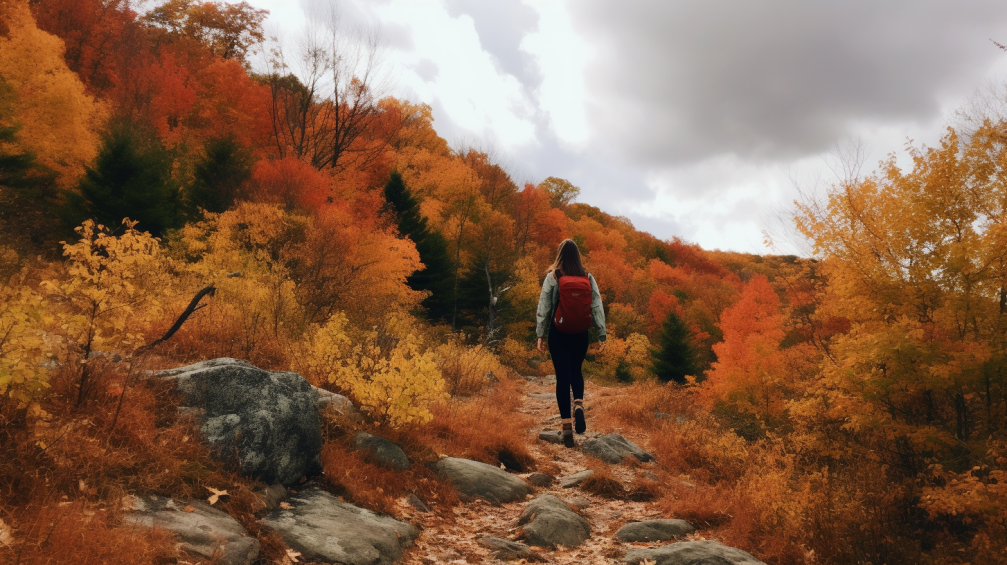Investing in quality backpacking gear is essential for any outdoor enthusiast. With a myriad of options available, it can be overwhelming to choose the right equipment. In this article, we’ll guide prioritizing gear for trail cruising and autumn hunting.
Modern outdoor enthusiasts, especially the DIY hunters, showcase their adventures on Instagram, adorned with the latest gear. While contemporary equipment surpasses the quality of the 1980s and early ’90s, some seasoned outdoorsmen stick to reliable classics that have served them well for decades.
Choosing backpacking gear is a significant investment, and navigating through various options, from budget-friendly to high-end, can be challenging. This guide will help you prioritize durability, functionality, and peace of mind for your outdoor excursions without compromising on quality.
THE FOUNDATION: YOUR BACKPACK
A high-quality backpack is the linchpin of any outdoor adventure. For hunters, it acts as a silent companion, holding gear for extended pursuits in the pursuit of elusive prey. When selecting a backpack, consider the following factors:
CAPACITY: Tailor the size to your needs based on trip length. A 40- to 60-liter backpack suits weekend campers, while extended expeditions may require 70 liters or more.
COMFORT: Opt for padded shoulder straps and a well-ventilated back panel for comfort during extended periods of carrying a loaded pack.
TOUGHNESS: Choose materials that withstand rough terrain and varying weather, with reinforced seams, robust zippers, and water-resistant fabrics.
ACCESSIBILITY: Prioritize backpacks with multiple compartments for organized storage and easy access to essential items.
Recommendations: Explore packs from reputable brands like Osprey, KUIU, Stone Glacier, Sitka, and ALPS Outdoorz to find options suitable for your pursuits.
BIGGEST EXPENSE: A QUALITY TENT In summer, a lightweight, breathable tent protects you from rainstorms and bugs. For autumn hunts, a three-season tent with proper insulation is crucial. Consider the following when selecting a tent:
WEIGHT: Prioritize lightweight options made from durable yet lightweight materials like nylon or polyester.
SEASONS: Choose a three-season tent for spring, summer, and fall, or a more expensive four-season shelter for wintry temperatures.
SETUP: Opt for tents with quick and easy setups, featuring color-coded poles and simple designs for pitching in challenging weather.
VENTILATION: Ensure proper ventilation with mesh panels and adjustable vents, especially during humid summer nights.
CLOTHING STRATEGY: THINK LAYERING Planning clothing for outdoor adventures can be challenging due to unpredictable weather. Layering is key for versatile comfort:
LAYERING: Invest in moisture-wicking synthetic base layers, insulating mid-layers, and waterproof outer layers for varying conditions.
MATERIAL: Choose synthetic or merino wool fabrics for base layers, and opt for down or synthetic fill jackets for lightweight warmth.
VERSATILITY: Select flexible clothing with multifunctional designs, such as jackets adaptable to changing weather and pants with zip-off legs.
PROTECTION: Include ball caps, knit hats, gloves, and waterproof footwear for protection against sun, rain, and chilly temperatures.
Recommendations: Explore clothing options at www.backcountry.com and consider brands like Sitka, First Lite, and KUIU for quality outdoor clothing.
SLEEPING BAGS AND PADS: OPTIMIZING REST
Innovative technology in sleeping bags and pads helps minimize weight while ensuring a restful night’s sleep. Consider the following:
SLEEPING BAG: Choose a bag with an appropriate temperature rating for the season, opting for extra insulation for late autumn.
SLEEPING PAD: Prioritize comfort and insulation, taking weight and packability into account. Self-inflating models offer compact solutions.
Recommendations: Visit the Sleep System category at gohunt.com for a range of sleeping bags, pads, and accessories.
LIGHTWEIGHT KITCHEN: BACKCOUNTRY COOKING
For those with canoes to haul gear, backcountry cooking can be elaborate. Backpackers, however, should keep it light. Consider the following:
STOVE: Opt for small, fold-up one-burners for lightweight cooking. Ensure a plan for fuel recycling or swapping containers.
COOKWARE: Choose durable, non-stick cooking ware for easy cleaning. Consider nesting pots to save space.
UTENSILS: Keep it simple with spoons, a sharp knife, and a multi-tool for versatility.
STORAGE: Use food storage containers to secure provisions, especially in bear country or areas prone to rodent activity.
WATER: ESSENTIAL HYDRATION Having a reliable water plan is crucial, with every drop either boiled or properly filtered. Consider the following:
WATER FILTERS: Opt for lightweight pump or gravity filters with high flow rates and minimal maintenance for reliable hydration.
BACKUP PLAN: Carry chemical purification tablets or drops for no-fuss water purification. UV purifiers offer quick and effective results, ideal for those on the move.
OTHER GEAR: NAVIGATION AND SAFETY
Apart from the essentials, ensure you have a complete set of navigational and emergency safety tools:
NAVIGATION: Carry a topographical map, compass, GPS device, smartphone, and charger for comprehensive navigation.
EMERGENCY TOOLS: Have a whistle or mirror for signaling, a compact emergency shelter like a space blanket or bivy, and a well-stocked first-aid kit.
Remember, planning ahead is crucial for reliable water sources and adequate clothing to handle various weather conditions without overloading your backpack. With the right gear and preparation, you can embark on outdoor adventures with confidence and enjoyment.

